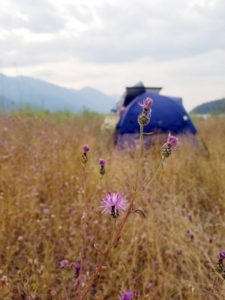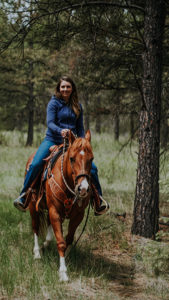Home »

How you can stop the spread of invasive species
 By East Kootenay Invasive Species Council
By East Kootenay Invasive Species Council
The East Kootenay is home to beautiful camping spots, trails, lakes and rivers.
Recent restriction lifts have visitors making up for lost time and arriving in large numbers. We welcome them with open arms – we love that visitors enjoy our region as much as we do! Whatever summer activities you take part in, we all have a part to play in stopping the spread of invasive species and minimizing the threats to our native biodiversity
For campers, the best defence against invasive species is clean gear. Brush off and shake out tent and gear before packing it away, and make sure to clean and dry your tent before your next adventure to avoid tracking seeds and plant parts to a new location.
When B.C. has fire bans in place, it is important to remember that transporting firewood from one site to another can spread invasives like Gypsy moths, so make sure to buy where you burn (when it is safe to do so!)
Boating, Paddling and Angling
Aquatic invaders spread by attaching to hard surfaces like boats and trailers and colonizing the next water body the boat is put into. It is very important (and legally required) to Clean, Drain and Dry your boat before putting it into another body of water. Remove visible debris from boats, paddles, trailers and gear and clean with pressurized water whenever possible (ask us for a list of carwashes in the East Kootenay).
Drain all water from your boat before leaving the launch or at home on grass (not down street grates!) and make sure to dry your boat as many aquatic invasive species can survive in standing water for weeks.
Horses (and other animals) are excellent spreaders of invasive species, so it is up to us to make sure hooves and hair are free of seeds, burs, mud and any visible plant parts. Use a horse pick to remove mud, dirt and plant parts from hooves and brush tail, mane and body before leaving a site.
Make sure to feed your horses only certified weed-free hay three days before heading out onto public land.
East Kootenay Invasive Species Council photos
Lead image e-KNOW file photo









